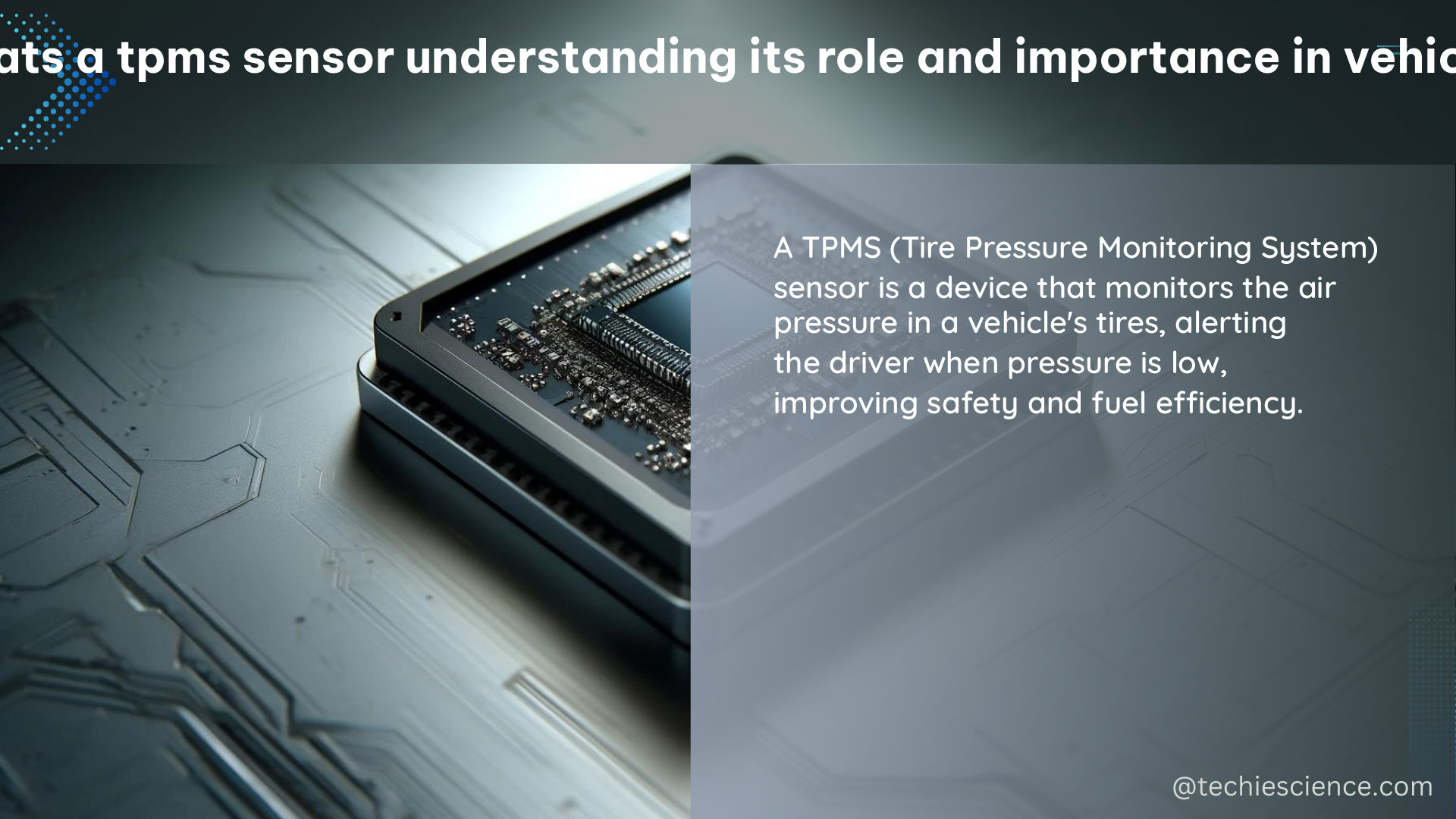A Tire Pressure Monitoring System (TPMS) is an electronic system in vehicles that monitors the air pressure inside pneumatic tires. It plays a crucial role in ensuring safety, performance, and efficiency by maintaining proper tire pressure. TPMS can be direct or indirect, with direct TPMS measuring tire pressure through sensors in each tire and indirect TPMS using the vehicle’s anti-lock braking system to approximate tire pressure.
Understanding the Components of a Direct TPMS
Direct TPMS consists of several main functions, including:
- Pressure Sensor: This component measures the air pressure inside the tire and converts it into an electrical signal.
- Analog-Digital Converter: This converts the analog pressure signal into a digital format that can be processed by the microcontroller.
- Microcontroller: The microcontroller is the “brain” of the TPMS sensor, responsible for processing the pressure data and transmitting it to the vehicle’s control module.
- System Controller: This component manages the overall operation of the TPMS sensor, including power management and communication protocols.
- Oscillator: The oscillator provides the necessary clock signal for the microcontroller and other digital components.
- Radio Frequency (RF) Transmitter: The RF transmitter sends the tire pressure data to the vehicle’s control module using wireless communication.
- Low-Frequency (LF) Receiver: This component receives low-frequency signals from the vehicle, which are used for sensor activation and programming.
- Voltage Regulator: The voltage regulator ensures a stable power supply for the TPMS sensor’s electronic components.
These components are typically mounted on the valve stem inside the tire, requiring only a few external components like a battery, housing, PCB, and sealing material.
The Benefits of TPMS

TPMS offers several benefits to vehicle owners and operators:
- Increased Safety: TPMS helps prevent tire failures by alerting drivers to low tire pressure, which can lead to blowouts, tread separation, and other dangerous situations.
- Improved Vehicle Handling: Properly inflated tires provide better traction, steering response, and stability, enhancing the overall driving experience.
- Reduced Stopping Distances: Tires with the correct air pressure have shorter stopping distances, improving the vehicle’s braking performance.
- Better Fuel Efficiency: Underinflated tires create more rolling resistance, leading to increased fuel consumption. TPMS helps maintain optimal tire pressure, resulting in better fuel economy.
- Reduced Environmental Impact: By improving fuel efficiency, TPMS contributes to lower greenhouse gas emissions and a smaller environmental footprint.
- Data Collection for AI and Predictive Maintenance: TPMS data can be used by AI systems and predictive maintenance algorithms to monitor tire health and optimize vehicle performance.
The TREAD Act and TPMS Regulations
The TREAD Act, passed by the U.S. Congress in 2000, requires most vehicles made after 2006 to be TPMS-equipped. This legislation was enacted to help drivers recognize the importance of tire pressure safety and maintenance.
If the TPMS warning indicator illuminates on the vehicle’s dashboard, it’s essential to take the following steps:
- Check the air pressure in all tires, including the spare.
- Inflate any tire that is underinflated to the recommended pressure, which can be found in the vehicle’s owner’s manual or on the driver’s side door jamb sticker.
- Replace the tire with a spare if necessary, and have the damaged tire repaired or replaced as soon as possible.
TPMS Sensor Maintenance and Replacement
TPMS sensors have a typical battery life of around 10 years. On most vehicles, the battery is not serviceable, requiring the entire TPMS sensor to be replaced when the battery dies. The sensor stem is also subject to damage, and each time a sensor is changed, it generally has to be reprogrammed into the vehicle’s control module so it can be recognized.
When replacing a TPMS sensor, it’s important to ensure that the new sensor is compatible with the vehicle and that it is properly programmed and calibrated. Failure to do so can result in the TPMS warning light remaining illuminated or the system not functioning correctly.
Conclusion
In summary, TPMS is a vital safety feature in modern vehicles, ensuring proper tire pressure, improving vehicle handling, and reducing stopping distances. It also contributes to better fuel efficiency, reduced environmental impact, and data collection for AI systems and predictive maintenance in autonomous vehicles. Understanding the role and importance of TPMS sensors is crucial for maintaining the safety, performance, and efficiency of your vehicle.
References:
– Tire-pressure monitoring system – Wikipedia
– TPMS Sensor Essentials – Tires Easy
– TPMS – Tires Plus
– Tire Pressure Monitoring Systems – Tire Rack
– How Tire Pressure Monitoring Systems Work – HowStuffWorks

The lambdageeks.com Core SME Team is a group of experienced subject matter experts from diverse scientific and technical fields including Physics, Chemistry, Technology,Electronics & Electrical Engineering, Automotive, Mechanical Engineering. Our team collaborates to create high-quality, well-researched articles on a wide range of science and technology topics for the lambdageeks.com website.
All Our Senior SME are having more than 7 Years of experience in the respective fields . They are either Working Industry Professionals or assocaited With different Universities. Refer Our Authors Page to get to know About our Core SMEs.